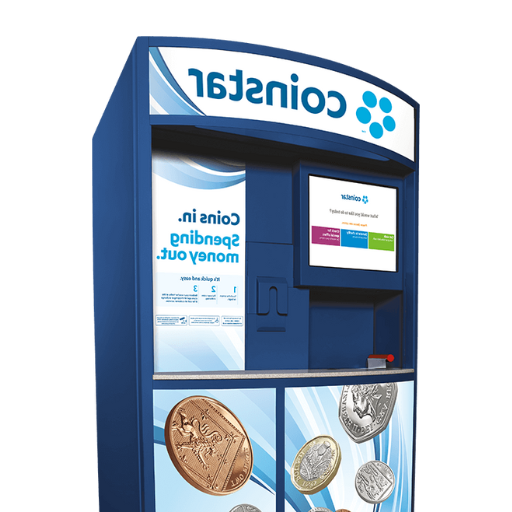The potato chip is a beloved snack that has won over palates globally, yet its origin is as intriguing as its crunchy texture. This blog post delves into the fascinating journey of the potato chip, starting from its accidental creation in the 19th century to becoming a staple snack in households worldwide. We will explore key moments in its evolution, including how innovations in packaging and production transformed it into a convenient delicacy. Additionally, we will examine its cultural significance and how different regions have embraced the snack, leading to a variety of flavors and styles. Join us as we unravel the story behind the irresistible crunch of the potato chip, a tale that encompasses culinary creativity, industrial progress, and global popularity.
What is the Origin Story of Potato Chips?

The origin story of the potato chip dates back to 1853 in Saratoga Springs, New York. It is widely believed that the invention resulted from an encounter between Chef George Crum and a dissatisfied customer at Moon’s Lake House. The customer complained that Crum’s fried potatoes were too thick, prompting him to slice them thinner and fry them until crispy. Surprisingly, the customer loved the crispy creation, and thus, the potato chip was born. This serendipitous moment led to Crum’s fried slices gaining popularity, eventually paving the way for potato chips to become a beloved snack worldwide. Although variations of fried potatoes existed before Crum’s innovation, this particular event marked a pivotal moment in the snack’s history, sparking widespread adoption and commercial production.
Who Invented the Potato Chip?
Potato chips, as we know them today, were chiefly made popular by George Crum who worked at Moon’s Lake House in Saratoga Springs. In 1853 he was confronted by a client who claimed, in an unsatisfactory tone, that the French fried potatoes prepared by Crumm were too thick. In response to this dissatisfaction, Crum cut the potatoes into very fine slices and deep-fried them. The customer enjoyed his meal and in no time chips became a local delicacy. However, the crucial point is that although other cultures have developed similar substances elsewhere, it was Crum who made the world realize that potato chips had the potential of being an ever popular snack.(Recommended product: Potato Chip Production Line)
How Did the 1853 Incident Lead to the Creation of Saratoga Chips?
In 1853, a customer at Moon’s Lake House complained that his fried potatoes were too thick. As a result, George Crum, a chef renowned for his culinary skill, decided to slice the potatoes ultrathin and fry them until crisp. When the customer tasted them, he was delighted. This unexpected success transformed these thin, crispy potatoes into a popular snack known as “Saratoga chips.” Through this incident, Crum inadvertently invented something that delighted many, and his innovation quickly spread beyond Saratoga Springs. This simple act of turning a complaint into a gourmet delight made Saratoga chips a culinary sensation.
How Did Potato Chips Become Popular?

Potato chips gained widespread popularity through a combination of industrial innovation and effective marketing. After their initial invention, the task of making potato chips more accessible fell to various entrepreneurs. In the early 20th century, the mass production of potato chips was pioneered by food manufacturers who developed industrial slicers and cooking equipment. This allowed for chips to be produced quickly and in large quantities, making them more available to the general public. Additionally, the advent of packaging technology enabled chips to be stored and transported without losing their crunch, further enhancing their appeal. As grocery stores expanded and advertising grew more sophisticated, potato chips were marketed as a convenient, flavorful snack, cementing their status as a staple in American and international markets.
The Evolution from Snack Food to a Popular Snack
Once George Crum invented Saratoga chips, food manufacturers jumped on the opportunity to mass-produce them. They used industrial slicers and cookers to churn out large quantities quickly. This production boom, coupled with modern packaging, helped keep the chips fresh and crispy during transport. Simultaneously, chips benefited from aggressive marketing campaigns that played up their convenience and taste. Supermarkets also expanded, making these snacks more accessible. This combination of factors propelled potato chips to their current status as a beloved snack worldwide.
Influence of Laura Scudder and Wax Paper on Packaging
Laura Scudder revolutionized potato chip packaging in the 1920s by introducing wax paper bags. Her innovative approach addressed a major issue: chips becoming stale quickly. By ironing wax paper into bags, she created packaging that preserved freshness and crunch. This advancement not only extended shelf life but also made chips more appealing to consumers worried about staleness. Scudder’s packaging method set a new industry standard, prompting other manufacturers to adopt similar techniques. Consequently, this innovation played a critical role in enhancing the marketability and popularity of potato chips globally.
The Rise of Flavored Chips in the Market
The rise of flavored chips began in the 1950s when manufacturers sought to diversify products and attract more customers. The first flavored chips, cheese and onion, and salt and vinegar, quickly became popular. Companies began experimenting with various seasonings, tailoring products to regional tastes. New flavors helped rejuvenate interest in chips, and increasing consumer demand drove even more innovation. Today, flavors range from classic options to exotic international spices, cementing flavored chips as staples in the snack industry. This diversification contributed significantly to the chip market’s expansion, meeting diverse palate preferences and establishing a dynamic product line.
What Impact Did the Invention of Potato Chips Have?

The invention of potato chips had a profound impact on both the snack industry and consumer eating habits worldwide. Initially a simple culinary accident, potato chips rapidly transformed into a popular snack due to their irresistible crunch and flavor. This innovation created a new category within the food sector, leading to the development of a multi-billion dollar industry. Potato chips became a staple in households, influencing social gatherings and mealtime traditions. On an economic scale, they opened up opportunities for entrepreneurship and employment, driving growth in related sectors such as agriculture, packaging, and distribution. Overall, potato chips significantly altered food consumption patterns and continue to shape the snack industry today.
Changes in Potato Chip Production Over Time
Potato chip production has undergone significant changes since its inception. Early manufacturing was manual, involving hand-slicing potatoes and frying them in small batches. As demand grew, companies shifted to mechanical slicers and industrial fryers, boosting output and consistency. Innovations in packaging, like vacuum sealing, extended shelf life and distribution range. The industry also embraced technology with automated lines, improving efficiency and hygiene. The move towards healthier options led to the development of baked and reduced-fat varieties, reflecting evolving consumer preferences. Today, sustainability efforts focus on reducing waste and energy consumption during production. These advancements have maintained potato chips’ popularity and continue to adapt to modern demands.
The Growth of the Potato Chip Industry
The potato chip industry has grown tremendously since its humble beginnings. Initially, local shops produced and sold potato chips, catering to nearby communities. However, as their popularity soared, larger companies emerged, leading to mass production and nationwide distribution. Improved logistics networks enabled chips to reach consumers across the globe. Marketing strategies, like celebrity endorsements and creative branding, further fueled consumer demand. Today’s industry continually evolves by introducing new flavors and adapting to dietary trends, such as gluten-free or organic options. Through strategic expansion and innovation, the potato chip sector remains robust, thriving in a competitive snack market.
How Potato Chips Changed the World of Snacks
Potato chips revolutionized the snack industry through accessibility and innovation. They introduced a convenient, ready-to-eat option that quickly became popular worldwide. By pioneering mass production, companies ensured consistent quality and availability, setting a new standard for snack foods. Innovations in flavors expanded consumer choice, leading to a dynamic market that continually adapts to trends. As a staple in grocery stores and vending machines, potato chips drove industry growth and inspired a wide range of imitators and new snack developments. Their success encouraged other companies to explore novel ingredients and healthy alternatives, reshaping the global snack landscape.
How Are Potato Chips Made Today?

Potato chips are made today using an efficient and highly mechanized process. First, high-quality potatoes are harvested and thoroughly washed to remove any dirt. They are then peeled and sliced uniformly to ensure even cooking. These slices are washed again to remove excess starch, which aids in achieving the desired texture. Next, the slices are fried in hot oil until they become crispy and golden brown. After frying, the chips are seasoned with various flavors and packaged quickly to maintain their freshness. Throughout this process, quality control measures are implemented to ensure consistency and safety in the final product. This streamlined manufacturing approach allows for the large-scale production of potato chips, meeting the global demand efficiently.
The Process from Thin Slice of Potato to Crisp
To transform a thin slice of potato into a crisp chip, begin with careful selection and washing of fresh potatoes. Peel and slice them precisely for even cooking. The slices go through a washing stage to remove starch, which improves crispness. Fry the slices in hot oil, maintaining strict temperature control to achieve that perfect crunch. After frying, promptly season the chips with the desired flavorings. Immediately package them to lock in freshness and flavor, ensuring every bite is consistent. This method emphasizes quality and efficiency, delivering crispy chips to consumers worldwide.
The Role of Mechanical Potato Peeler in Modern Production
Mechanical potato peelers play a crucial role in the modern production of potato chips. They enhance efficiency by rapidly peeling large volumes of potatoes with minimal waste. These machines use precise cutting blades and brushes to remove the skin cleanly and consistently. This automation not only reduces the time required to prepare potatoes but also ensures uniformity in size and shape, which is crucial for even cooking. By automating the peeling process, manufacturers can focus quality control efforts elsewhere, ensuring the final product meets high standards. The use of these peelers also minimizes labor costs, contributing to more cost-effective production.
Innovations to Keep Chips Fresh and Crisp
To keep chips fresh and crisp, I utilize innovative packaging technologies. One such method is nitrogen flushing, which replaces the air in packages with nitrogen to preserve freshness. I also rely on moisture-barrier bags that protect chips from humidity and keep them crispy. Additionally, using resealable packaging provides consumers with convenience while maintaining the quality of the chips after opening. Together, these advancements significantly extend shelf life and enhance the consumer experience.
References
-
Who Invented the Potato Chip? – Explores the origins of potato chips, dating back to at least 1817.
-
Potato chip | History, Brands, Flavors, & Facts – Details the invention of potato chips by George Crum and their historical development.
-
Potato Chips on Tasting History – Discusses the invention of potato chips in Saratoga Springs, New York, in 1853.
Frequently Asked Questions (FAQ)
Q: How were potato chips invented?
A: Potato chips were invented by George Crum, a chef at a resort in Saratoga Springs, New York, in 1853. He created them when a customer, often said to be Cornelius Vanderbilt, complained that his fried potatoes were too thick.
Q: What is the story behind the origin of potato chips?
A: The origin of potato chips is linked to a dissatisfied diner at Moon’s Lake House in Saratoga Springs. Chef George Crum sliced potatoes thinly, fried them to a crisp, and seasoned them to create what we now know as potato chips.
Q: What role did Saratoga Springs play in the history of potato chips?
A: Saratoga Springs is considered the birthplace of potato chips. It was here that George Crum first created the snack that would become a popular staple in the United States and beyond.
Q: Why are potato chips considered one of the most popular snack foods?
A: Potato chips are considered one of the most popular snack foods due to their crispy texture, versatility in flavor, and convenience. They can be found in a variety of flavors such as sour cream and onion and are widely available in stores.
Q: How did the production and packaging of potato chips evolve?
A: Initially, potato chips were packaged in barrels or tins, which left chips at the bottom prone to staleness. As the demand grew, manufacturers began packaging chips in sheets of wax paper and later in airtight bags to maintain freshness.
Q: What are Cape Cod potato chips and why are they significant?
A: Cape Cod potato chips are a brand known for their kettle-cooked method, which gives them a distinctive crunch. They represent one of the premium chip brands that emphasize quality and taste.
Q: How have flavored chips changed the potato chip market?
A: Flavored chips have significantly expanded the market by offering consumers a wide variety of taste options. In the United States, flavors like sour cream and onion and barbecue have become staples, contributing to the snack’s widespread popularity.
Q: Did George Crum open his own restaurant after inventing potato chips?
A: Yes, George Crum opened his own restaurant in 1860, where he served his popular homemade potato chips, further popularizing the snack.
Q: How significant is the consumption of potato chips today?
A: Today, millions of pounds of potato chips are consumed annually, making them one of the most widely eaten snack foods in the world. Brands like Lay’s potato chips have become household names.
Q: Are there any legends or myths associated with the early potato chip?
A: Potato chip legends often revolve around the circumstances of their invention, with stories about the demanding customer and Crum’s response varying in detail. Regardless of the myths, the impact of the early potato chip on snack culture is undeniable.










